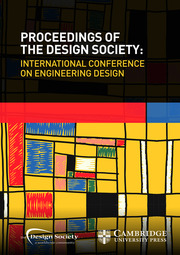Article contents
The Impact of Viewing Images of Precedents on the Cognitive Process of Architectural Idea Generation
Published online by Cambridge University Press: 26 July 2019
Abstract
Among the increasing number of researches about design thinking, several studies, empirically investigate the report between design process and different sources of inspiration. Visualization of Images represents one of the most current stimuli in the architectural design.
This work focuses on the link between the active part of design process and images of precedents when visualized by the designer at the beginning of his design activity. It aims to identify and measure the impact of such visualization on the cognitive process of ideation.
We use the protocol analysis method. Data are collected through design experiment and coded by the semio-morphic coding scheme. Results show that the visualization of images of precedents enhances the productivity of the ideation process. The process consistency is also improved by the apearence of homogeneous phases. Moreover the ideation process becomes more creative cognitively, by making the genesis of primitive chains of actions faster, easier and similar.
Accordingly, this paper communicate the effect of a common practice such images’ visualization on the architectural design process to get insight on the cognitive befits of this practice.
- Type
- Article
- Information
- Proceedings of the Design Society: International Conference on Engineering Design , Volume 1 , Issue 1 , July 2019 , pp. 209 - 218
- Creative Commons
- This is an Open Access article, distributed under the terms of the Creative Commons Attribution-NonCommercial-NoDerivatives licence (http://creativecommons.org/licenses/by-nc-nd/4.0/), which permits non-commercial re-use, distribution, and reproduction in any medium, provided the original work is unaltered and is properly cited. The written permission of Cambridge University Press must be obtained for commercial re-use or in order to create a derivative work.
- Copyright
- © The Author(s) 2019
References
- 4
- Cited by


